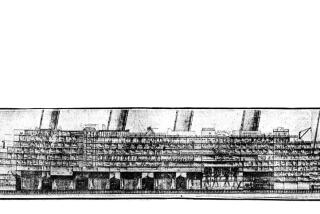Book review: ‘The Fall’ by Guillermo del Toro and Chuck Hogan
Long before vampires were posing naked on the cover of a recent issue of Rolling Stone , they were vile, terrifying creatures that looked like rats, lived in crypts and hardly ever turned up at the gym. Fortunately for fans of the old-school literary villains, writing partners Guillermo del Toro and Chuck Hogan are determined to resurrect that archetype with a series of novels centered on the exploits of the Master, an imposing, murine-like figure with long talons, no ears and a hinged jaw that conceals a shooting stinger to extract his victims’ blood.
With “The Fall,” a sequel to last year’s “The Strain” (and the middle installment of a planned trilogy), the duo succeeds mightily, maintaining the kinetic energy of the first book and raising the stakes significantly. It wouldn’t be right to reveal the story’s explosive conclusion, but let’s just say that when all’s said and done, humanity might not be so comfortably positioned at the top of the food chain.
The story picks up where “The Strain” leaves off. The Master continues to amass his army of blindly loyal acolytes, the vampiric pandemic spreading like a virus through Manhattan and New York’s outer boroughs. Dr. Ephraim Goodweather, an epidemiologist formerly with the Centers for Disease Control, and his ally, Abraham Setrakian, a European Jew who first encountered the undead during his time in a concentration camp, are holed up in Setrakian’s pawnshop, nursing their battle wounds after a supernatural showdown gone awry.
The pair, joined by Goodweather’s colleague and sometime lover Nora, his young son and an exterminator named Vasiliy Fet, struggle to come up with a way to eradicate the Master and his disciples, whose ranks now include Goodweather’s ex-wife, Kelly. Outside, social order descends into chaos as the living attempt to flee — or decide to stay and loot what’s left of the city. An impotent government response to the crisis, hampered in part by the devious machinations of the ailing billionaire Eldritch Palmer (whose name is a nod to a 1965 Philip K. Dick novel), offers no hope for the plague’s survivors.
Del Toro, the writer-director who’s become venerated among fans of dark cinematic fantasies for his striking, original vision, and Hogan, an award-winning novelist who specializes in crime fiction (his Boston-set novel “Prince of Thieves” served as the basis for the film “The Town”), make for strong collaborators. Though elements of the story are familiar, the sharp, propulsive language helps invest them with new power.
Setrakian obviously recalls Bram Stoker’s vampire hunter Abraham Van Helsing, a character purported to be the subject of a film Del Toro has an eye to make, but the flashbacks to his earlier encounters with one particular nemesis, a former Nazi officer who tortured him during the war, are uniquely compelling. Moments when the writers pause the action to include posts from Fet’s blog are less interesting, even if the dispatches function as a nice contemporary homage to the epistolary form Stoker used for “Dracula.”
It’s hard not to think, based strictly on “The Strain” and “The Fall,” that were the partners’ novels to be combined into one lengthy narrative, the result would be something akin to Justin Cronin’s magnificent “The Passage” or the best of Stephen King’s early, expansive sagas: a sprawling, detailed examination of a world gone mad, where people routinely feed on and betray other people, mothers — sometimes unknowingly — harm their own children, and a sparse group of heroes must do whatever they can to prevent the Earth from being consumed by perpetual night.
You have to hand it to Del Toro and Hogan. At a time when brooding, sexy vampires are so ubiquitous in popular culture thanks to “True Blood” and “Twilight,” the authors finally have given the creatures back some of their nasty, vicious, delicious bite.

